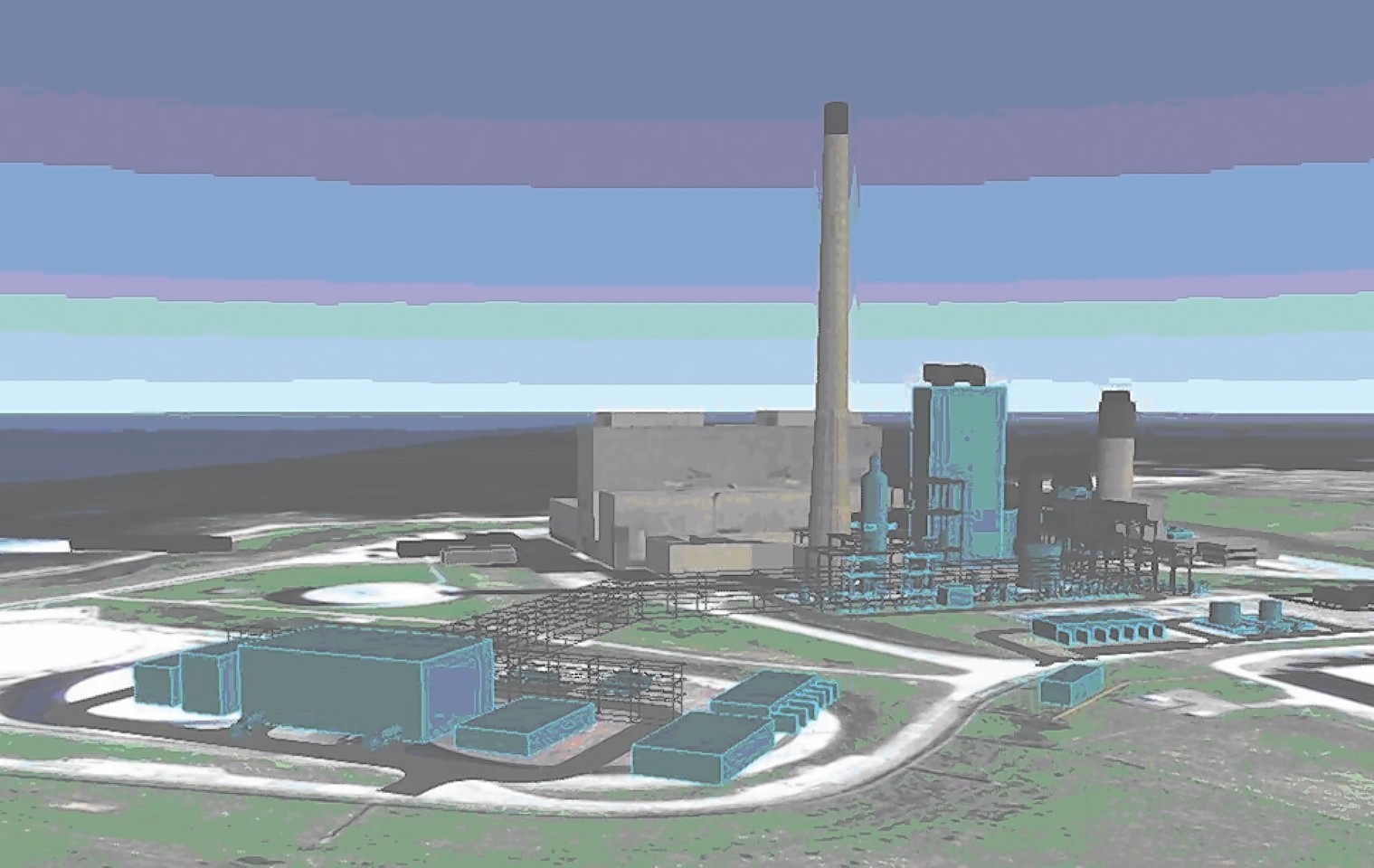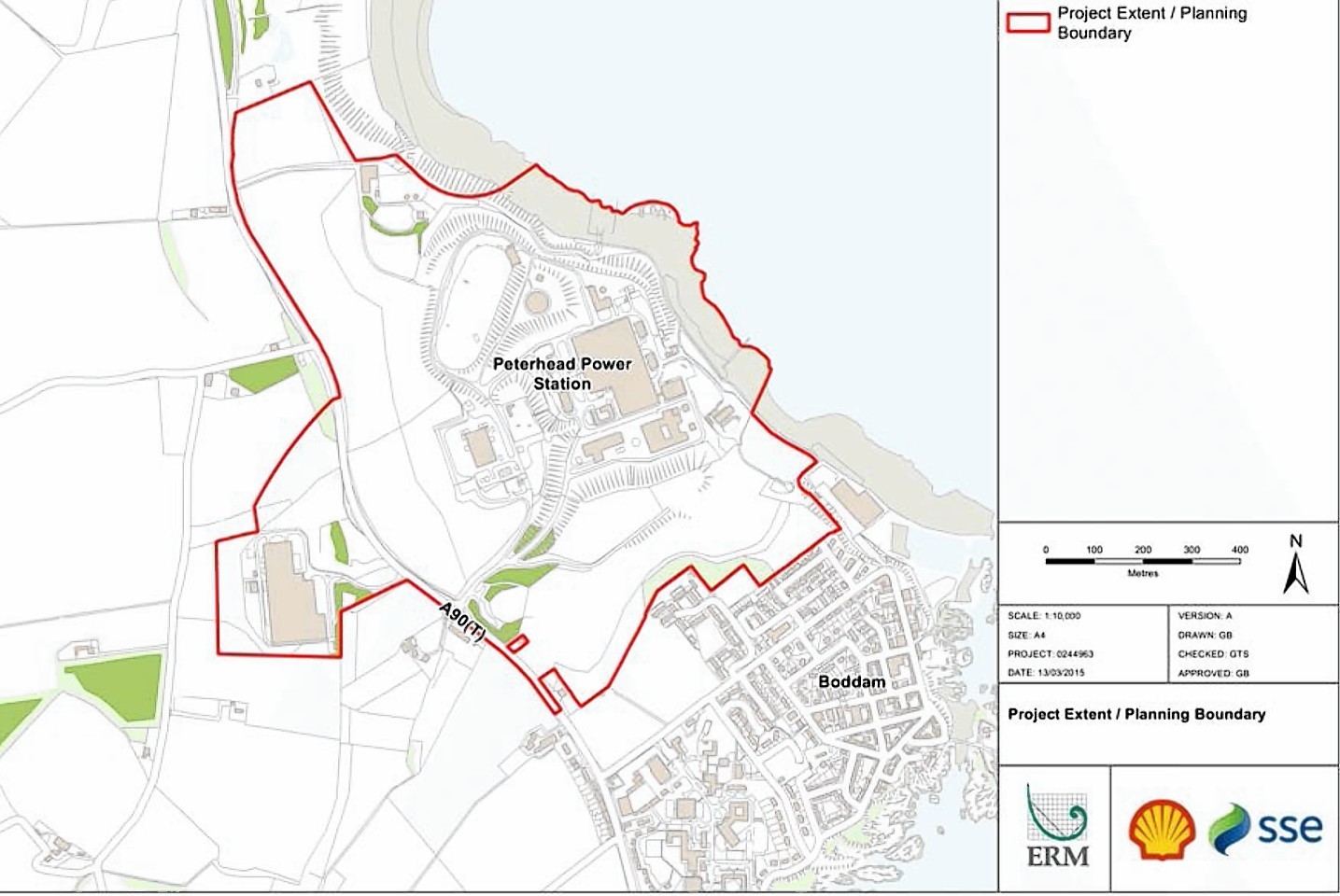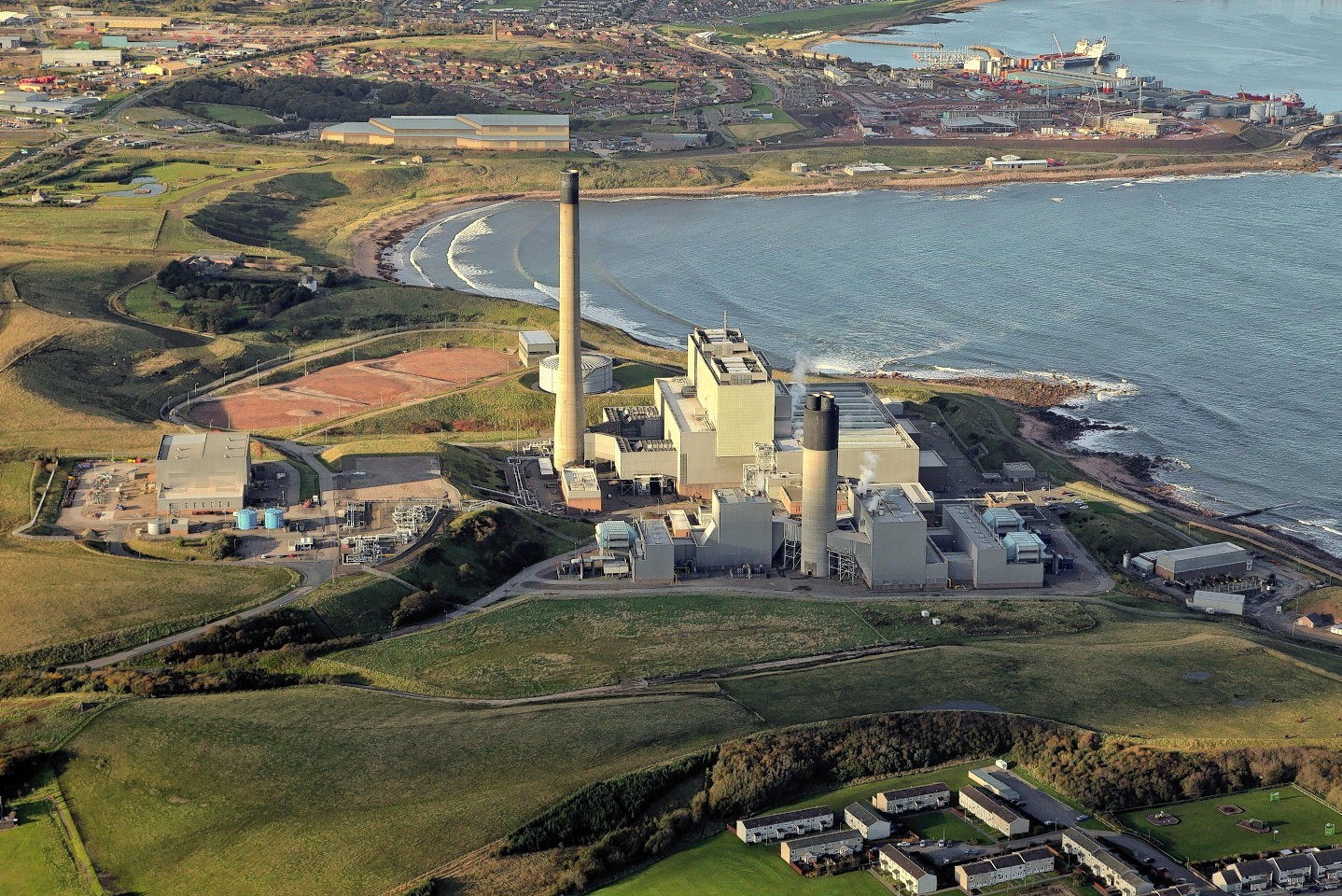Plans for a pioneering clean energy project in the north-east have been formally tabled with Aberdeenshire Council in a major milestone for the multimillion-pound scheme.
The carbon capture and storage (CCS) development planned for Peterhead Power Station could bring hundreds of jobs to the Buchan town and would be the first of its kind in the world.
Spearheaded by offshore giant Shell, it involves pumping tens of millions of tonnes of harmful CO2 back into depleted North Sea gas wells, 62 miles offshore.
The new plans detail the demolition of some of the existing infrastructure at the site south of Peterhead, as well as necessary modifications to the plant including the installation of a new steam turbine.
Crucially, the application shows where the new carbon capture, compression and conditioning plant would be built.
The designs also show extensive landscaping and modifications to the junction of the A90 Aberdeen to Peterhead road at Boddam.
If backed by the UK Government and approved by Aberdeenshire Council, Peterhead Power Plant – managed by SSE – would become the first commercial scale gas-fired CCS project.
Peterhead would act as a model for the burgeoning industry helping to reduce the cost of future plants, and would help the UK pump one million tonnes of environmentally damaging emissions every year for the next decade.
Last night, Shell’s project leader Bill Spence said: “Submitting the onshore environmental statement and planning application is the culmination of a huge amount of technical and design work by the whole Peterhead project team over the last year, informed by all of the feedback we have received through our three phases of public consultation.
“We are pleased to have reached this milestone and are grateful to the local community for the level of interest and engagement we have seen.”
Mr Spence and his team carried out extensive work with the communities of both Peterhead and nearby Boddam as they prepared the environment impact assessment that is part of the planning application.
In the report, the Shell team have considered the impact the project would have on traffic, noise, air quality, land contamination, waste, flooding, the visual landscape and the local economy.
Although concerns have been raised about a dramatic rise in construction traffic while necessary upgrades are made to the power station, the project could bring a massive jobs boost to the region.
An average of 400 people will be employed during the construction phase, rising to a peak of 600.
Once fully operational, the CCS project would employ up to 30 new people.
The report says: “The project’s construction phases will bring significant economic and social benefits through direct expenditure and the supply chain, safeguarding existing employment and creating new direct, indirect and induced jobs.
“Strategies are being developed to prioritise local procurement, enhancing the economic benefits experienced by communities and businesses local to the project.”
Shell has awarded the contracts to design the onshore plant and pipeline to Technip and Wood Group Kenny respectively.
Work on the Goldeneye platform – where the pipeline will connect with the depleted fields – will be handled by Shell.
Feedback from the public consultation meetings, as well as the detailed plans and costings, will be given to the government later this year in a bid for a portion of the £100million carbon capture investment pot.
The UK Government and Shell will then each decide whether to fund the scheme.
The planning application is now subject to a 28-day public consultation period.


